One thing that we know for certain is that our CLM team cannot do everything that our members will need in the short time we’ll spend with them. We train them to generate income through management of a few simple assets, we give them the assets they need to get started, we follow them closely with weekly visits for eighteen months as they begin to manage their affairs, we educate them regarding a few crucial personal and familial health and live-skills issues, and we ensure both that they have access to free medical care and that they know how to use that access.
It sounds like a lot. I suppose it is a lot. But the economic and social facts that have kept our members in extreme poverty are both stubborn and complex. Achieving the near-perfect record of success that CLM has achieved so far requires that our members get support from multiple directions, not just from one case manager. They need support that is always there for them, not only during weekly half-hour visits. They have no phones, so help must closer than a phone call away.
CLM starts as a comprehensive intervention into a family’s life that is targeted to reach those families who really needed it. But the challenge we face demands that we transform ourselves into something greater, into a community development initiative that fundamentally changes the social dynamics in the places where we work. That is the purpose behind the Village Poverty Reduction Committees. We help leaders in each village build committees that support our efforts and thus work towards eradicating extreme poverty in the communities they live in.
The first step towards forming these committees is selecting the people that will serve on them. That process begins while we are in the final stages of selecting new CLM members. We ask each prospective member to tell us whom she turns to in her community when she has a serious problem. We ask them whether there are community leaders whom they can ask for advice or for small gifts of food or money when hunger or sickness threatens to overwhelm their homes. We then develop a list of potential committee members for each community, trying to add key local actors – such as school principals, veterinary workers, successful market women, and elected officials – whenever we can. Our case managers then hand-deliver an invitation to an organizational meeting to each potential member, explaining CLM in general and the role of a Village Committee in particular in some detail.
At the first meeting, a case manager leads the session as CLM members elect the person they’d like to serve as the committee’s president. Once the president has been chosen, he or she takes over the meeting, leading members as they elect a secretary and a treasurer. They also elect two representatives from among the CLM members to serve on the committee. After that, the committee will meet once each month to discuss members’ problems and work out solutions. Case managers working in the area attend the meetings as consultants.
But the majority of a committee’s work happens outside these meetings. Its members become resources, helping CLM members protect and manage their assets, aiding them resolve conflicts with neighbors, and providing emergency assistance. Say, for example, a CLM member, through thoughtlessness or inexperience, lets her goat into a neighbor’s garden. That neighbor might decide to kill the goat. A committee member would help the CLM member convince the neighbor to charge a reasonable fine instead. A committee member might lend another woman a mule or a horse so she can get herself, her husband, or her child to the hospital in an emergency. Or maybe he or she would work to convince a local school principal to accept school fees in small monthly payments, rather than in a lump sum, to help a CLM member send her kids to school.
What’s crucial in all this is that committee members are members of the community they serve. The committee structure gives these men and women a way to organize what have previously been piecemeal efforts to help their neighbors, and it gives our program a way to organize a substantial presence in each community, one that will remain long after our staff’s activities have been completed.
The photos below were taken at organizational meetings for Village Committees in a range of communities. They were held in a church, a cockfighting ring, a community school, and in someone’s backyard.
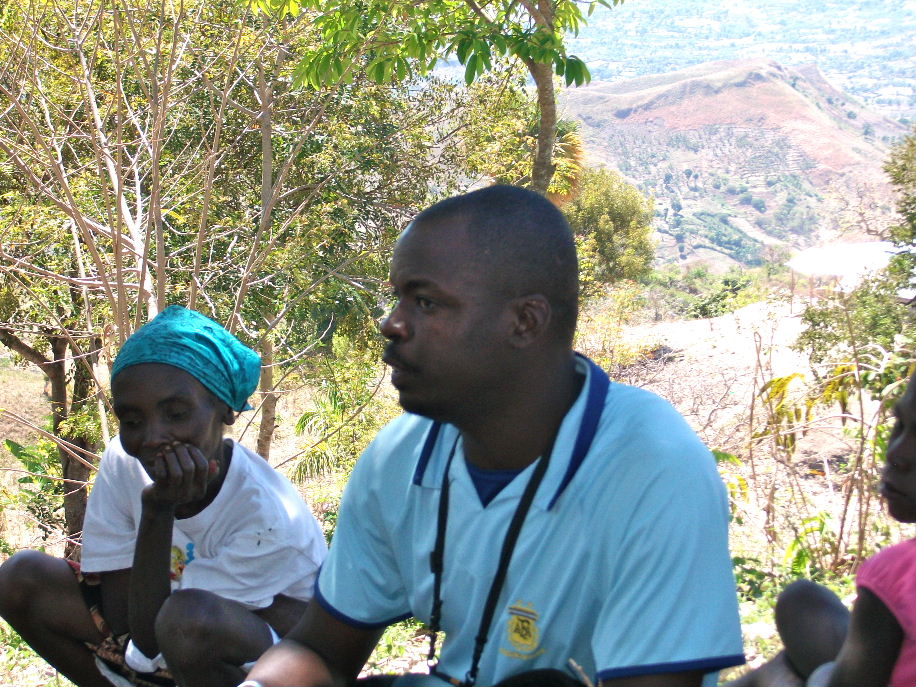
//Our case manager, Martinière, explains the purpose of the committee to members in Mannwa//
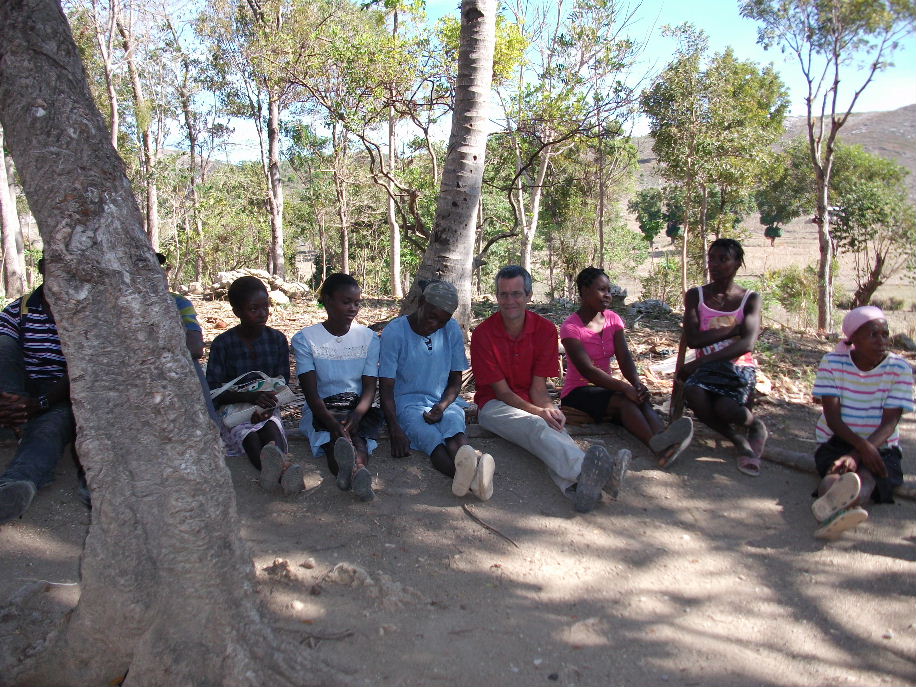
//CLM members in Dega listen to an explanation of the voting procedure//
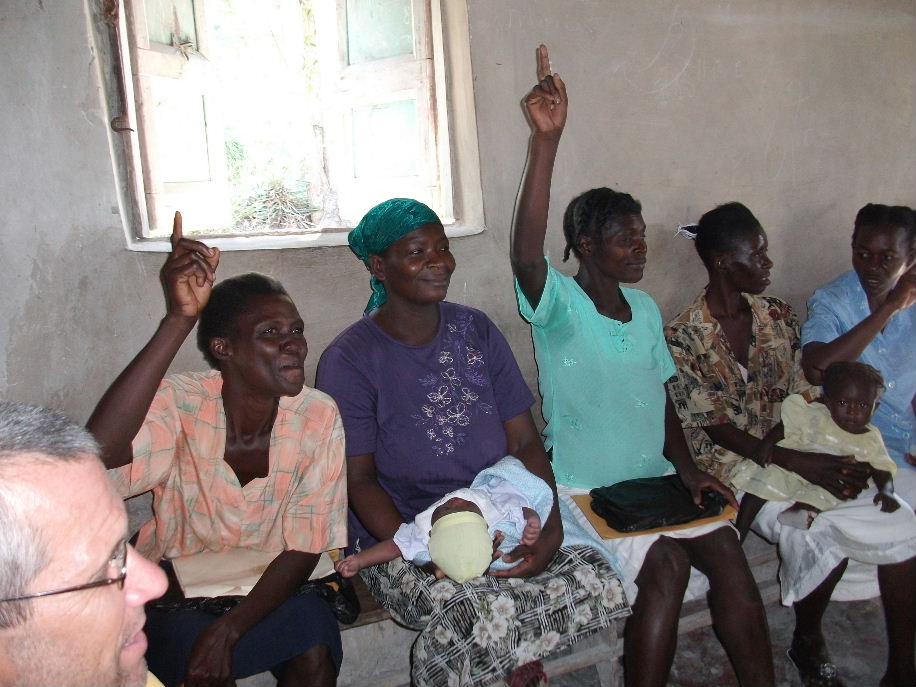
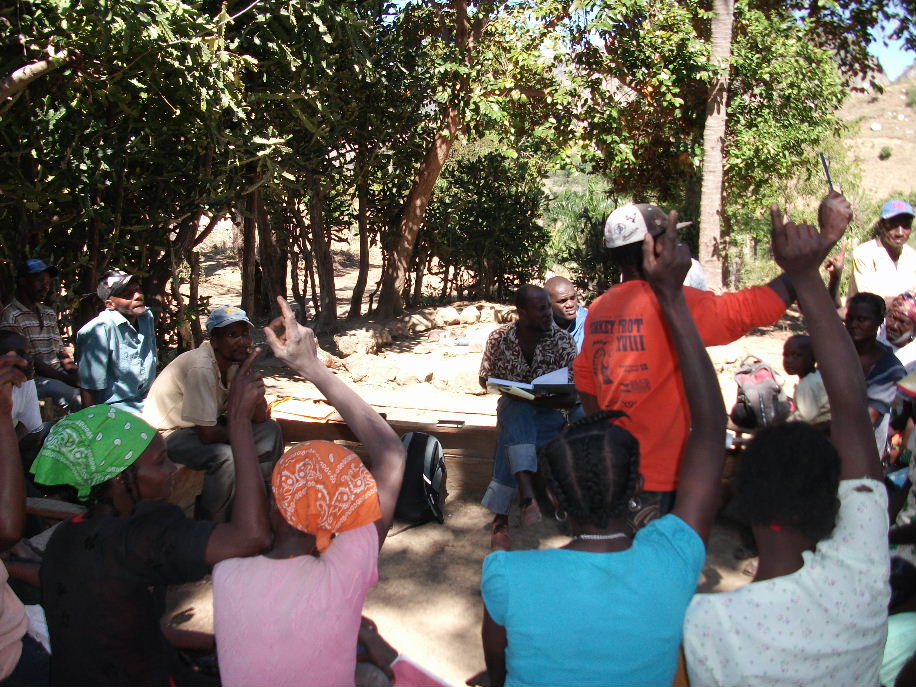
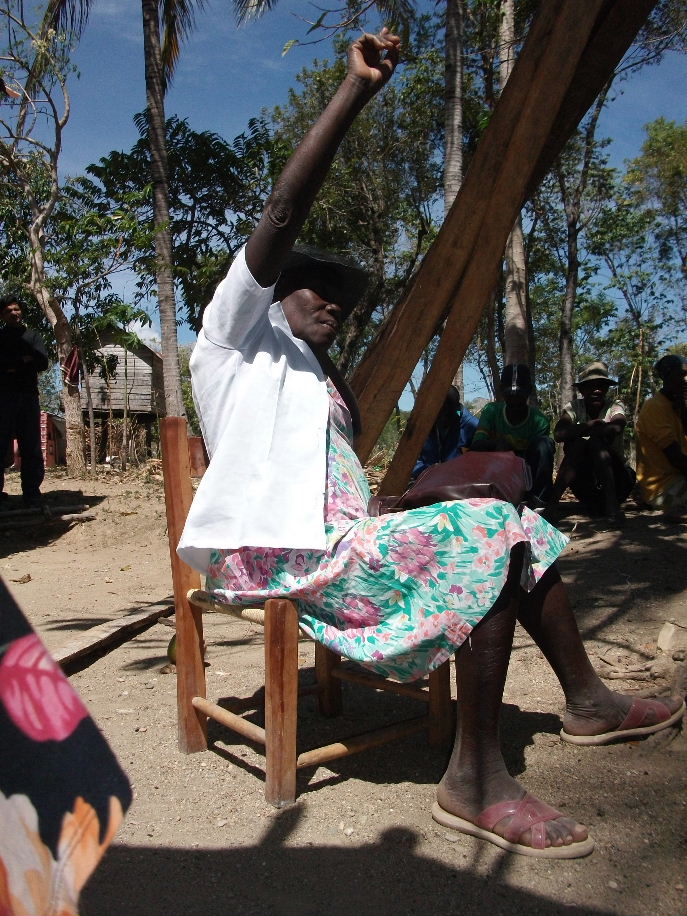
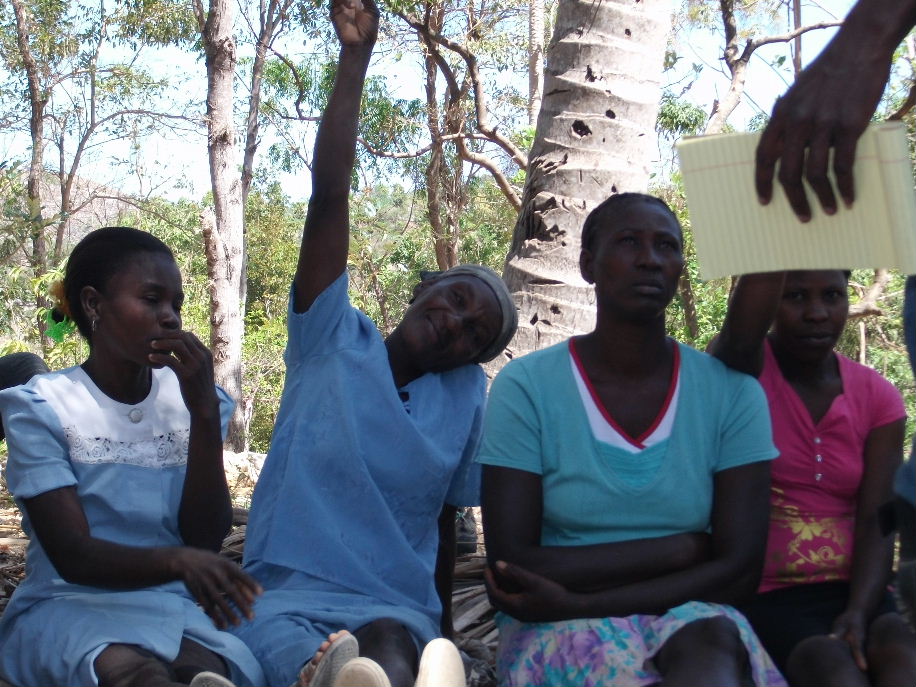
//CLM members in Byeneme, Boukankola, and Dega vote for their committees’ leadership//
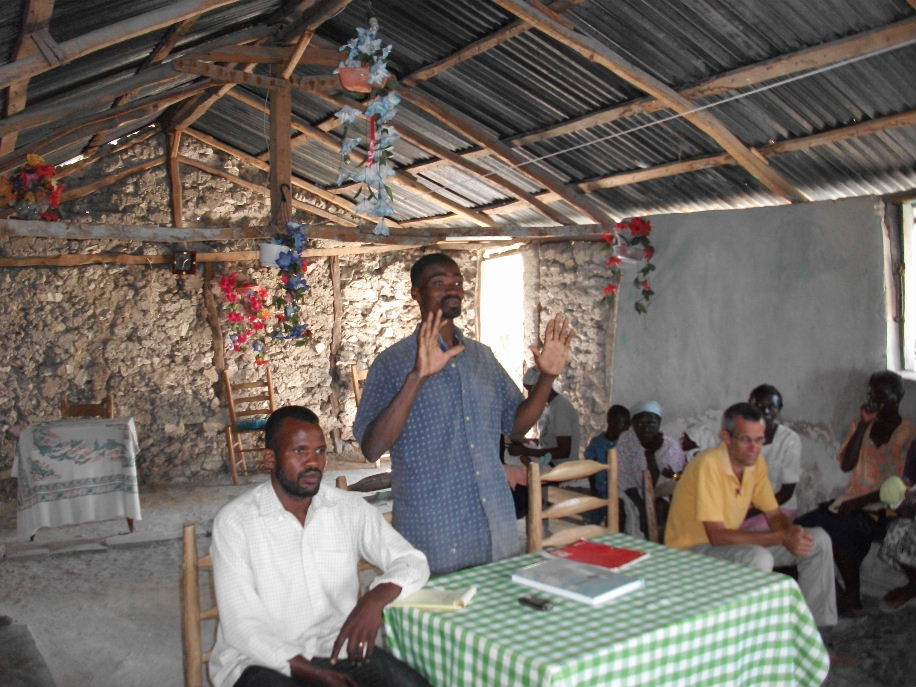
//The new president of the Byeneme committee explains the election to members//